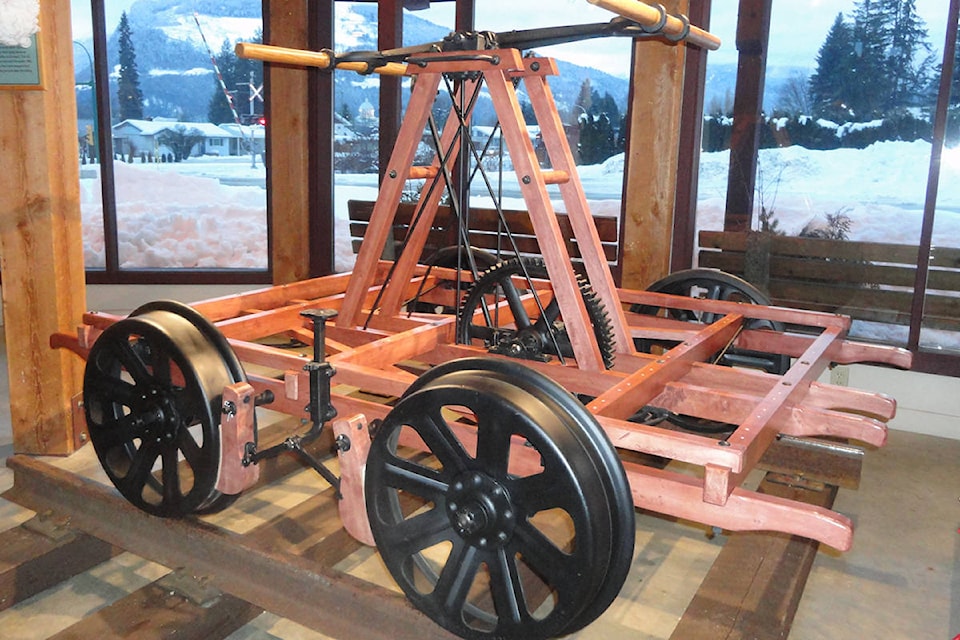Found sitting in a box car at the Revelstoke Railway Museum, a Kalamazzo No. 2 Section Handcar has been restored and is now on display.
When Ed Palasz, a former railway worker, was initially asked to take on the restoration project, he said no; there was 100 pieces and the whole thing was skewed. And, when doing some research he found another stumbling block.
“The cost is astronomical,” he said.
One key piece in particular would be really pricey: the red brass bushings.
However, Palasz eventually agreed to take a second look, and low and behold, the group of volunteers found the original bushings.
READ MORE: VIDEO: Historic railway equipment moved to Revelstoke museum
Palasz said he took the pieces home and polished them. When he saw they were barely used, he decided to take on the project.
For $900 and hundreds of hours of work by Palasz and his son, Josh, the handcar was restored to its former glory.
“I stopped counting after 500 hours,” Palasz said. “My son wouldn’t even tell me how many hours he put in.”
According to his research, Palasz said that the handcar was used in the Revelstoke area between 1910 and 1930. He knows this because there were differences in the design of the handcars before and after those times.
However, if parts were lying around and used later on, the car could be much newer, Palasz said.
The handcar was used to transport crew members across each 8-12 mile section. There were thousands across North America. The resorted piece of equipment weighs 600-650 lbs. With four men, plus lunches, tools and water, that is between 1,500-1,600 lbs.
“As soon as the railroad could scrap them, they did,” Palasz said. “They were a lot of work.”
READ MORE: Live camera on Revelstoke Railway Museum draws worldwide viewers
At the time, the handcar would have cost around $400, now, restored machines sell between 12,000-20,000 USD.
Deciding to take on the project, Palasz was determined to keep everything original. To do that he needed to find the factory plans, luckily they weren’t too hard to track down, and Palasz has shop drawings for almost every part.
Parts that were lost or too broken to be repaired were fabricated by Josh. For the wood parts, Palasz used the wood workshop at the Revelstoke Visual Arts Centre, with advice from Ken Talbot.
| Underneath the deck on the Kalamazzo No. 2 Section Handcar. Palasz said it was a sad day when he put the deck on. "Underneath is phenomenal, so many pieces and parts." (Jocelyn Doll/Revelstoke Review) |
“Anything that was manufactured was done to shop specs, there is no variations, nothing is different, this is just like the day it came out of the factory,” Palasz said.
According to his research, the handcars would have been painted with any paint that was lying around, mixed with linseed oil.
After experimenting with a few mixtures of his own, Palasz said he found a stain that closely matched what CP Rail Tuscan red and linseed oil would look like.
Some pieces were more difficult to find than others. They could buy slotted wood screws online but had to fabricate the square nuts.
“There is no glue, there is no nails, it is all bolted,” Palasz said.
Palasz started the restoration in April, he and his sons and daughter in law moved the handcar into the museum just before Christmas.
“We never missed a detail,” Palasz said proudly.
@JDoll_Revy
jocelyn.doll@revelstokereview.com
Like us on Facebook and follow us on Twitter.
